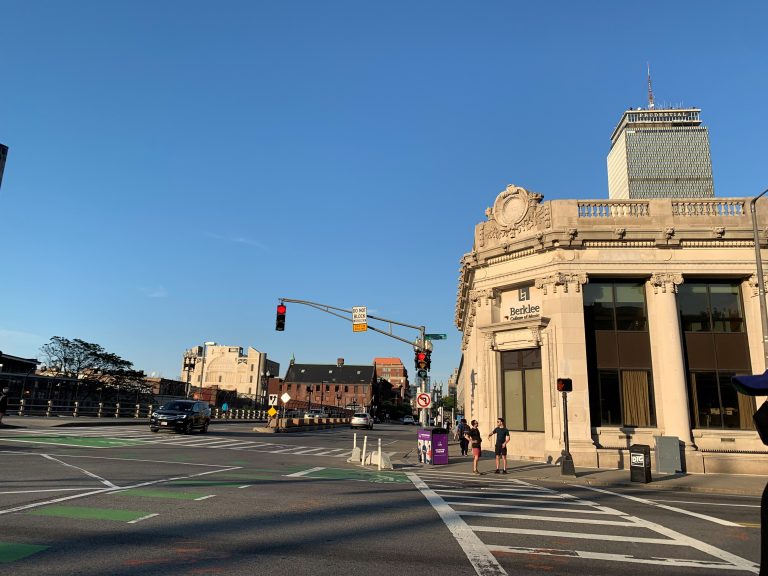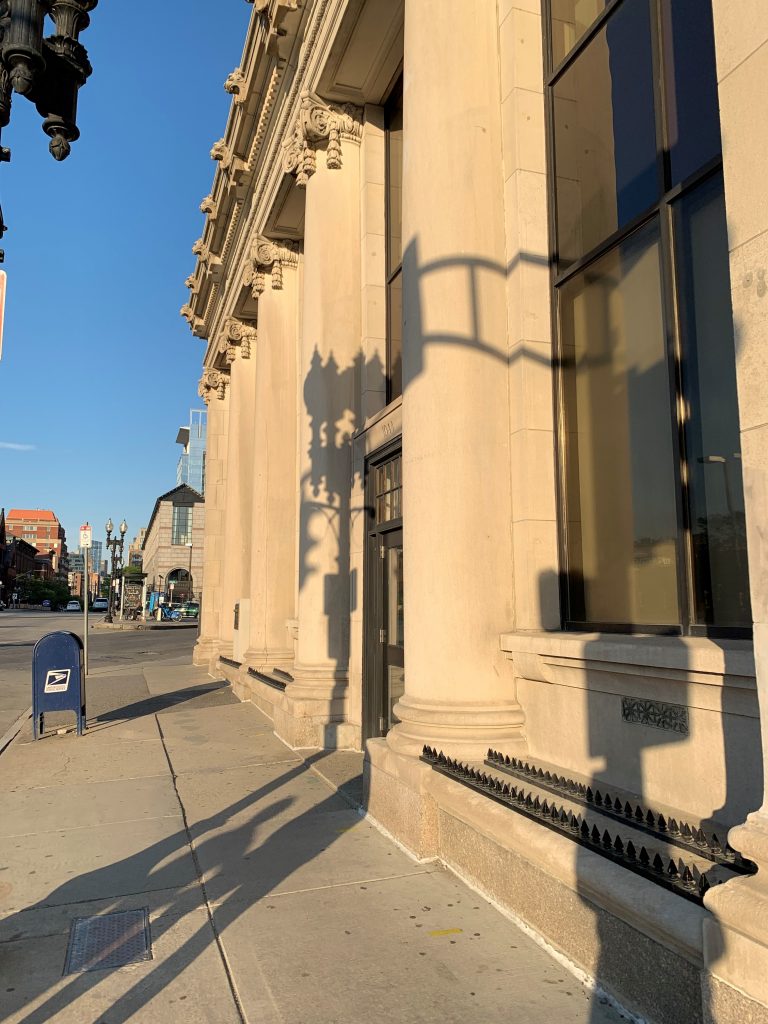
What do you notice when you walk around your neighborhood? Let’s go on a walk together and see what we see:
On a particularly sunny, mild Sunday this April – unusual for Boston, where gray skies, chilly temperatures, and the threat of snow typically dominate until the sudden onset of summer in late May or June – I took a stroll through the city.
Starting off through the chatter and thin stream of crowds around Fenway Park, I made my way through the Newbury Street area, passing Berklee College of Music, Prudential Center, Boston Public Library, Boston Public Garden, and Boston Common, on my way towards Chinatown. I was hoping to enjoy the familiar tastes of a tomato-egg dish (one of the few things my dad still cooks since my mom took over the cooking 20 years ago); some lamb skewers (the new place on the corner uses just the same mixture of spices as the many skewer restaurants of my birthplace in western China); and a bubble tea (another new store has recently opened)! Satisfied with my take-out orders, I start the trek back, nibbling along the way.
A beautiful day, right? Almost a perfect day.
—if, as I am, you are still able-bodied, housed, and economically stable after the ravages of the COVID-19 pandemic.


If, however, you happen to move around in a wheelchair, this walk would have looked tremendously different. Boston, like many other American cities, has long had crumbling infrastructure. Uneven gaps in the sidewalk and potholes in the streets make it challenging to navigate even for me. The crowds of people and cars certainly don’t help mobility, particularly while maintaining a 6 foot distance from everyone else.
And the visibly homeless, strewn around the city, seem to all disappear as sunset approaches: perhaps to vie for a spot in one of Boston’s homeless shelters, but just as likely to find and claim a safe, dry, mildly lit spot in a park or protected overhang. The city recently cut down the stands of tall reeds by the river in the Back Bay Fens area, once a popular spot for “sleeping rough”, and anti-homeless architecture – spikes on flat surfaces, armrest dividers bisecting benches, circular benches, “randomly” rocky ground – litters the city.
And Boston Chinatown, once proudly vibrant with throngs of tourists and Bostonians alike, with lines out the door making for even tighter navigation on the narrow sidewalks, now sports nearly as many dark, empty restaurant fronts as brightly lit, empty restaurant windows. I imagine the last time Chinatown was so decimated may have been in the 1950s-60s when businesses and homes were demolished in order to build the John F. Fitzgerald expressway. And since then, gentrification and the drop in affordable housing options has continued to push residents and businesses out of the neighborhood, and the general feel of grittiness and neglect from the City doesn’t help.
In public health, we are trained to examine, measure, and influence human behavior and biological (sometimes social or environmental) phenomena. This means that we have blind spots when it comes to understanding the physical environment: we forget to consider and learn from the powerful ways that the built environment shapes access. Unless we listen to marginalized communities to hear about how the lack of green and blue spaces in urban cities affects their mental health or how the distance or signage excludes people from accessing community health centers, for those of us not experiencing these on a daily basis it’s like breathing – you don’t notice the air until it’s so polluted you can’t breathe.
On the flip side, behavioral science has become a powerful tool for public health. Where you position information or objects has been shown to nudge people into certain choices and away from others. However, in a time where everyone is oversaturated with information, choices, and the consequences of ultimately-not-so-different-choices (do we really need 20+ kinds of cereal or soda?), I think there is power in simplification.
In the American context, individual choice is such a fiercely held value that people don’t stop to question what they’re really choosing between. Historically, public health was about simplifying access for all to public goods – water purification, sewage treatment, and garbage collection are all fundamental public health functions done invisibly through local infrastructure, and you don’t see people fighting to have more choice in providers for these functions. Perhaps public health as a field could build on these fundamental successes in shaping behavior through simplification rather than just behavioral nudges. The looming challenges of climate change, unsustainable food systems, and rise in non-communicable diseases certainly require additional tools to simplify the invisible structures that shape individual choice.
When you went on this “walk” with me through downtown Boston, who did you picture moving through this space?
As health equity and antiracism become more familiar concepts in public health, there is a tendency for all issues to become subsumed under race and gender identities. However, within other marginalized identity groups (e.g. LGBTQ+, disability, etc.), there are still racial and gender hierarchies. It is dangerous to ignore the nuances of intersectionality: we risk advancing changes that only benefit the most privileged among minoritized groups, at the cost of ignoring the needs of the doubly- and triply-marginalized.
HPHR.org was designed by ComputerAlly.com.
Visit HPHR’s publisher, the Boston Congress of Public Health (BCPH).
Email communications@bcph.org for more information.

Click below to make a tax-deductible donation supporting the educational initiatives of the Boston Congress of Public Health, publisher of HPHR Journal.![]()